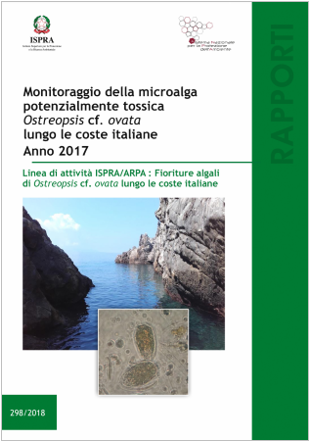Informazione tecnica HSE / 25 ° anno
/ Documenti disponibili:
45.602
/ Documenti scaricati: 34.520.387
/ Documenti scaricati: 34.520.387
OMS, 2019
La presente relazione si concentra sulla presenza di microplastiche nell'acqua potabile e nei potenziali rischi per la salute umana che possono essere associati a tale esposizione. Il bersaglio il pubblico comprende regolatori di acqua potabile, responsabili politici e fornitori di acqua. Il Scopo della presente relazione è aumentare la comprensione della questione delle microplastiche in Italia acqua potabile e per sintetizzare in che modo le attuali conoscenze potrebbero influenzare la politica e azioni di gestione nonché esigenze di ricerca. Visto l'ampio interesse per la plastica e l'inquinamento da microplastiche, questo documento può anche interessare i ricercatori, i gruppi della società pubblica e civile interessati all'inquinamento da plastica.
Questo rapporto, incentrato specificamente sull'acqua in bottiglia e l'acqua del rubinetto, segna l'inizio di Sforzo dell'OMS per valutare i potenziali rischi per la salute umana associati all'esposizione alle microplastiche nell'ambiente.
I rischi potenziali sono da imputare alle stesse microparticelle, ma anche a prodotti chimici come additivi e derivati dal degrado delle medesime ed infine a batteri che possono colonizzare i microframmenti strutturando il noto “biofilm”.
Le microplastiche sono ubiquitarie nell’ambiente e questo è un fatto certo. Com’è intuibile il rapporto OMS stima che ci siano una miriade di vie di trasporto in acqua dolce, di cui le più significative sono:
Non è possibile per il momento descrivere danni alla salute da ingestione di microplastiche da acqua potabile, perché non esistono ancora studi effettuati sull’uomo, bensì solo pochi eseguiti su animali, ma ad una concentrazione molto alta e quindi poco sovrapponibili alla situazione umana.
Inoltre le microparticelle offrono all’adesione di germi un’area troppo piccola, per cui l’eventuale biofilm batterico risulta piuttosto scarso e quindi irrilevante rispetto, per esempio, alle eventuali infestazioni idriche da deiezioni umane e animali.
Le direzioni verso cui il report propone di volgere la ricerca sono fondamentalmente due:
- affinare il reperimento e la successiva rimozione di microplastiche dall’acqua potabile, usando tecniche che permettano la selezione di particelle sempre più piccole, nell’ordine del nanometro;
- incentivare gli studi che osservino le eventuali conseguenze sulla salute, quindi le malattie correlate ad ingestione di microplastiche bevendo acqua, sempre che ce ne siano.
_____
Contents
Executive summary
Acknowledgements
Acronyms and abbreviations
1 Introduction
1.1 Purpose of this report
1.2 Scope of this report
1.3 Background
1.4 Overview of contents
2 Occurrence of microplastics in fresh water and drinking-water
2.1 Introduction
2.2 Sources and transport of microplastics into water
2.3 General principles of sampling and analysis
2.4 Overall reliability of studies
2.5 Microplastic concentrations reported in fresh water
2.6 Microplastic concentrations reported in drinking-water
2.7 Particle size, shape and polymer type in fresh water
and drinking-water
2.8 Other routes of exposure
2.9 Conclusions and research needs
3 Possible human health risks associated with microplastics in drinking-water: particles and chemicals
3.1 Introduction
3.2 Potential hazards associated with particles
3.3 Potential hazards associated with monomers, additives and sorbed chemicals
3.4 Assessing possible risks from microplastics
3.5 Conclusions and research needs
4 Possible human health risks associated with microplastics in drinking-water: biofilms
4.1 Introduction
4.2 Characteristics of plastics and microorganisms that influence biofilm formation
4.3 Potential concerns associated with microplastic-associated biofilms in water
Contents iii
4.4 Distribution and risk of microplastic-associated biofilms in
drinking-water
4.5 Conclusions and research needs
5 Treatment technologies for removing microplastics from water
5.1 Introduction
5.2 Wastewater treatment
5.3 Drinking-water treatment
5.4 Considerations for drinking-water and wastewater treatment sludge
5.5 Conclusions and research needs
6 Managing plastic and microplastic pollution in the environment
6.1 Benefits of managing plastic and microplastic pollution
6.2 Responses to growing concern over plastic pollution
6.3 Options to curb plastic and microplastic pollution
7 Conclusions, recommendations and knowledge gaps
7.1 Conclusions
7.2 Recommendations
7.3 Knowledge gaps and research needs
References
Annex 1: Systematic review and other studies of microplastics in fresh water and drinking-water
A.1 Overview of systematic review
A.2 Systematic review methods
A.3 Overview of systematic review results
A.4 Summary of drinking-water studies
A.5 References
Figures
1.1 Global plastic production
1.2 Total non-fibre plastic production in Europe
2.1 Examples of routes by which plastics and microplastics enter and move in the freshwater environment and how microplastics may reach drinking-water
Tables
2.1 Polymer densities
2.2 Summary of reported microplastic particle numbers from freshwater
studies that scored highest for quality
2.3 Summary of reported microplastic or microplastic-like particle numbers and particle characteristics from drinking-water studies iv Microplastics in drinking-water
3.1 Exposure assumptions to assess microplastic intake in drinking-water, along with rationale and associated level of conservatism
3.2 Additional exposure assumptions to assess chemicals associated with microplastics in drinking-water, along with rationale and associated level of conservatism
3.3 Upper-bound daily intake estimates of chemicals from microplastics,
maximum levels of contaminants associated with microplastics, and
corresponding MOE
5.1 Summary of microplastic removal reported from wastewater treatment studies
7.1 Summary of key hazards associated with microplastics in drinking-water and estimated health risk
A.1 Overview of individual and accumulated scores from studies reporting microplastic concentrations in drinking-water, fresh water and wastewater
Boxes
1.1 The risk of microplastics to aquatic ecosystems
2.1 Lack of sewage treatment: the bigger problem?
2.2 Recommendations to improve sampling and analytical methods
2.3 Interpretation and comparison of occurrence studies
3.1 Risk is a function of toxicity and exposure
5.1 Data limitations
...
Fonte: OMS

ISPRA Rapporto 292/2018
Il presente Rapporto riporta i dati delle attività di monitoraggio del...

Piano operativo per il dissesto idrogeologico per il 2019.
(GU Serie Generale n.14 del 18-01-2020)
...
Art. 1. Piano operativo sul dissesto idrogeologico per il 2019
1. Ai sensi de...
ID 22881 | 06.11.2024 / Download Circolare (rielaborata)
Elenco delle imprese a forte consum...
Testata editoriale iscritta al n. 22/2024 del registro periodici della cancelleria del Tribunale di Perugia in data 19.11.2024